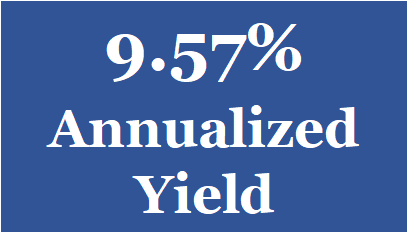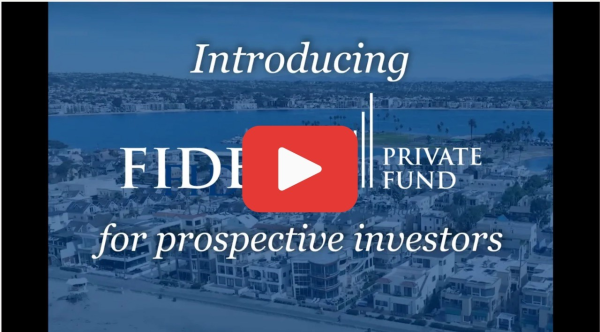In the world of alternative investments, transparency often distinguishes exceptional opportunities from problematic ones. For mortgage fund investors, transparency provides the foundation for informed decision-making, appropriate risk assessment, and ongoing confidence in portfolio allocations. While many investment vehicles operate as “black boxes” with limited disclosure, truly professional mortgage funds recognize that comprehensive transparency creates trust while demonstrating management quality.
The importance of transparency extends beyond simple ethical considerations to practical investment outcomes. Funds that maintain open communication and detailed disclosure typically demonstrate the operational discipline and investor focus that enhance long-term performance. Understanding what meaningful transparency encompasses helps investors identify managers likely to serve as responsible stewards of capital while avoiding those that might present unnecessary risks.
The Transparency Spectrum in Mortgage Fund Management
Mortgage funds demonstrate varying levels of transparency across several dimensions:
- Portfolio composition disclosure ranges from comprehensive loan-level detail to vague categorical summaries. Professional funds typically provide detailed breakdowns of property types, geographic distribution, loan sizes, and maturity profiles, allowing investors to understand exactly what their capital supports.
- Valuation methodology transparency reveals how funds determine property values, establish loan-to-value ratios, and assess collateral adequacy. This disclosure provides crucial context for understanding risk parameters and security margins that protect investor capital.
- Fee structure clarity encompasses all costs affecting investor returns, including management fees, performance compensation, and operational expenses. Complete disclosure in this area allows accurate return comparisons while revealing potential conflicts of interest that might influence management decisions.
The Fidelis Private Fund Approach to Transparency
 Fidelis Private Fund has built its investor relationships around comprehensive transparency:
Fidelis Private Fund has built its investor relationships around comprehensive transparency:
- We provide detailed quarterly reports that include complete portfolio metrics, performance data, and market observations. These communications ensure investors understand both current positioning and forward-looking strategy rather than merely receiving basic return figures.
- Our team maintains open accessibility for investor questions, with direct access to decision-makers rather than layered communication barriers. This approach ensures investors can obtain specific information about portfolio composition, underwriting standards, or individual loans whenever needed.
- We disclose our complete fee structure upfront, with no hidden charges or surprise expenses that erode returns. This transparency allows investors to understand exactly how their capital is managed and what costs apply to their investments.
Portfolio Transparency: Understanding What You Own
Comprehensive portfolio disclosure provides several specific benefits:
- Concentration awareness helps investors understand potential vulnerabilities within fund portfolios. Detailed disclosure regarding property type allocations, geographic distribution, and borrower diversification reveals whether funds maintain appropriate diversification or face excessive concentration in particular segments.
- Risk profile clarity emerges from understanding loan-to-value distributions, maturity schedules, and collateral quality across the portfolio. This information allows investors to assess whether actual risk positioning aligns with stated fund objectives and their personal risk tolerance.
- Strategy confirmation through portfolio composition ensures funds actually implement their stated investment approaches rather than drifting into other strategies. This alignment verification helps investors maintain appropriate portfolio diversification across their overall investment allocations.
Operational Transparency: How Decisions Are Made
Beyond portfolio composition, operational transparency reveals critical management practices:
- Underwriting process disclosure demonstrates how funds evaluate lending opportunities, establish loan terms, and manage risk. This transparency provides valuable insights into management discipline and decision quality that significantly impact long-term performance.
- Conflict management policies reveal how funds address potential conflicts of interest, related-party transactions, or other situations that might compromise investor interests. Clear disclosure in these areas demonstrates management integrity and fiduciary commitment.
- Workout approach transparency explains how funds handle challenging situations when loans encounter difficulties. Understanding these processes helps investors assess how management balances borrower accommodation with investor protection during inevitable market challenges.
Performance Transparency: The Complete Return Picture
Comprehensive performance disclosure goes beyond simple yield figures:
- Return composition disclosure distinguishes between interest income, fee revenue, and other return components. This breakdown helps investors understand sustainable yield sources versus one-time or potentially variable income streams.
- Historical performance transparency across different market conditions provides valuable context for current returns. Complete track records including both strong and challenging periods demonstrate management capability through various environments rather than highlighting only favorable results.
- Risk-adjusted performance metrics that incorporate volatility, drawdowns, and other risk measures provide more meaningful evaluation standards than absolute returns alone. These comprehensive metrics help investors make appropriate comparisons between different investment options.
Legal and Regulatory Transparency
Formal disclosure requirements establish minimum transparency standards:
- Offering documents including private placement memoranda, limited partner agreements, and subscription materials should provide comprehensive disclosure regarding fund structure, risks, and terms. These materials establish the formal relationship between investors and management while documenting all material aspects of the investment.
- Regulatory compliance information including registration status, regulatory examinations, and any historical actions provides important background on management’s regulatory history and current obligations. This information helps investors assess management’s commitment to operating within appropriate regulatory frameworks.
- Legal structure transparency regarding fund organization, tax treatment, and investor protections establishes the formal parameters governing the investment. Clear disclosure in these areas helps investors understand their rights, obligations, and potential recourse if problems emerge.
Red Flags: When Transparency Falls Short
Several transparency deficiencies should trigger immediate investor concern:
- Selective disclosure that highlights favorable information while omitting challenging aspects suggests potential misrepresentation. Professional managers provide balanced disclosure that acknowledges both strengths and potential vulnerabilities rather than presenting one-sided narratives.
- Delayed or inconsistent reporting may indicate operational problems, performance issues, or inadequate administrative capabilities. Professional funds maintain consistent, timely reporting regardless of performance or market conditions rather than becoming communicative only during favorable periods.
Investor Due Diligence: Evaluating Transparency
When assessing mortgage funds, several transparency-related factors merit particular attention:
- Information accessibility beyond formal reporting reveals management’s commitment to investor communication. Funds that welcome questions, provide additional information upon request, and maintain open communication channels typically demonstrate the transparency culture that enhances long-term relationships.
- Consistency between marketing materials and formal documentation indicates disclosure integrity. Alignment between promotional claims and legal documentation suggests honest communication, while significant discrepancies may indicate problematic marketing practices.
- Transparency evolution during challenging periods provides perhaps the most revealing test of management character. Funds that maintain or even enhance disclosure during difficult markets demonstrate the integrity and investor focus that builds lasting trust.
At Fidelis, we go beyond the typical mortgage fund. We’ve established an Advisory Board comprised of both general and limited partners to ensure management remains accountable to our core mission, preserving capital, generating competitive returns, and helping our investors reach their financial goals.
 The Long-Term Value of Transparency
The Long-Term Value of Transparency
While transparency requires additional effort from fund managers, it creates several long-term advantages:
- Investor confidence during market volatility stems largely from transparency established during calmer periods. Funds that maintain comprehensive disclosure typically retain investor loyalty during challenging markets, reducing redemption pressure when stability matters most.
- Operational discipline often improves when managers commit to detailed disclosure. The knowledge that investment practices remain visible to investors creates natural incentives for maintaining consistent standards and thoughtful decision-making.
- Reputation development through consistent transparency creates significant competitive advantages in capital raising and investor retention. This reputational capital often proves particularly valuable during market disruptions when investors gravitate toward managers they genuinely trust.
For investors seeking stable income with strong capital preservation, Fidelis Private Fund offers a professionally managed mortgage fund with a commitment to comprehensive transparency. Contact us today at 760-258-4486 to learn more about our investment approach and current opportunities.
Explore how Fidelis can support your growth with flexible, fast financing solutions tailored to your needs.
See Our Latest Performance Report
 Fidelis Private Fund annualized yield paid to Limited Partners for the 1st Quarter 2025. Click here for a summary of Fidelis’s annualized yield since inception.
Fidelis Private Fund annualized yield paid to Limited Partners for the 1st Quarter 2025. Click here for a summary of Fidelis’s annualized yield since inception.
 Fidelis 2028 Vivid Vision – Where are we going and how are we going to get there!
Fidelis 2028 Vivid Vision – Where are we going and how are we going to get there!
The Fidelis 2028 Vivid Vision document provides a comprehensive blueprint of the company’s strategic direction, core values, and operational principles, highlighting its commitment to capital preservation, growth, innovation, and client-centric services. Click to read the Fidelis vision.



